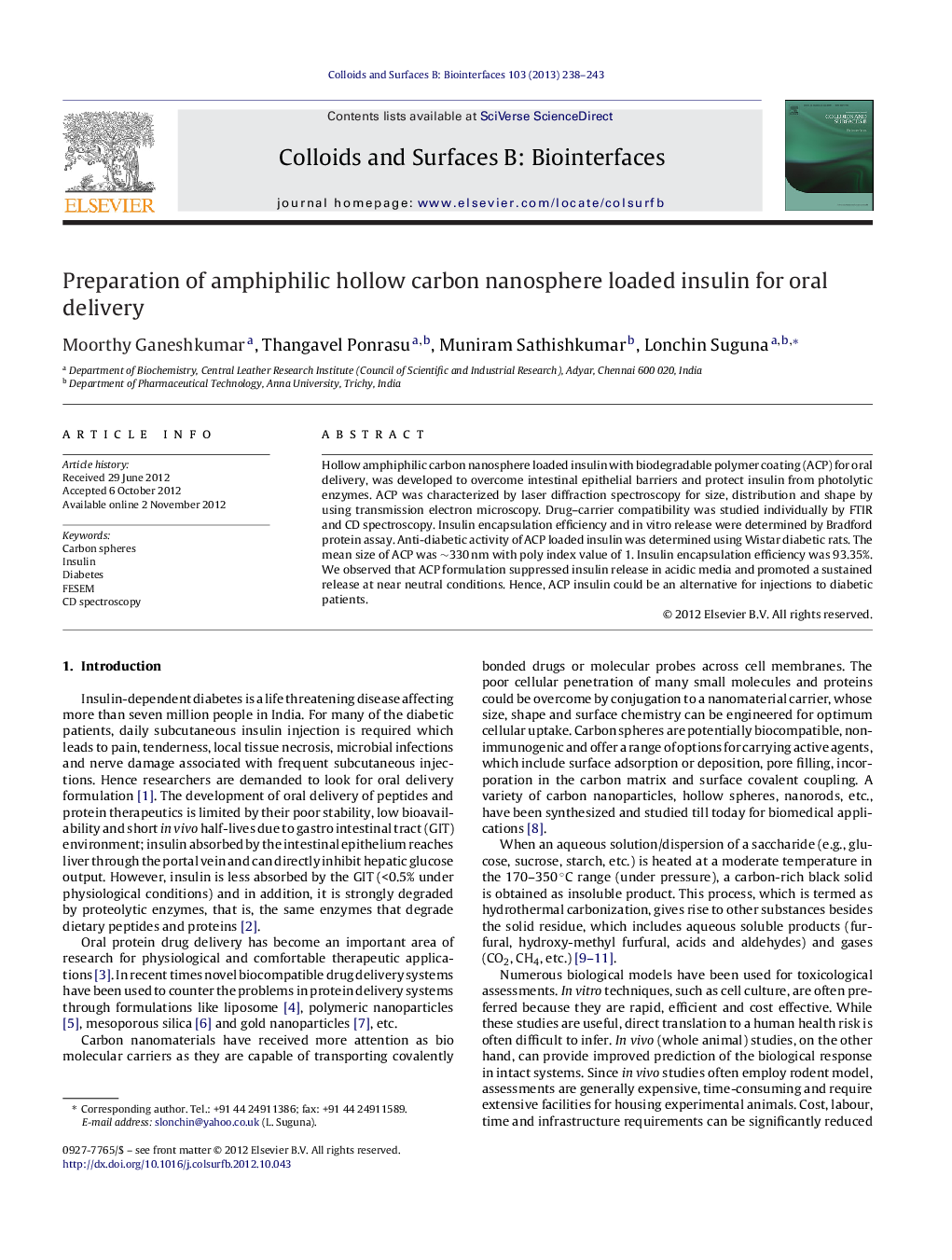| Article ID | Journal | Published Year | Pages | File Type |
|---|---|---|---|---|
| 600353 | Colloids and Surfaces B: Biointerfaces | 2013 | 6 Pages |
Hollow amphiphilic carbon nanosphere loaded insulin with biodegradable polymer coating (ACP) for oral delivery, was developed to overcome intestinal epithelial barriers and protect insulin from photolytic enzymes. ACP was characterized by laser diffraction spectroscopy for size, distribution and shape by using transmission electron microscopy. Drug–carrier compatibility was studied individually by FTIR and CD spectroscopy. Insulin encapsulation efficiency and in vitro release were determined by Bradford protein assay. Anti-diabetic activity of ACP loaded insulin was determined using Wistar diabetic rats. The mean size of ACP was ∼330 nm with poly index value of 1. Insulin encapsulation efficiency was 93.35%. We observed that ACP formulation suppressed insulin release in acidic media and promoted a sustained release at near neutral conditions. Hence, ACP insulin could be an alternative for injections to diabetic patients.
Graphical abstractFigure optionsDownload full-size imageDownload as PowerPoint slideHighlights► Hollow amphiphilic carbon nanosphere (AC) prepared by hydrothermal reaction. ► Hollow amphiphilic carbon sphere can be used as carrier because of its biocompatibility in zebrafish model. ► Chitosan can be adsorbed outer surface of AC loaded insulin followed by Eudragit L-100 polymer coating by electrostatic interaction. ► In vivo evaluation shows effectively reduced blood glucose level in a diabetic rat model.
